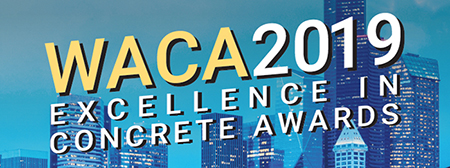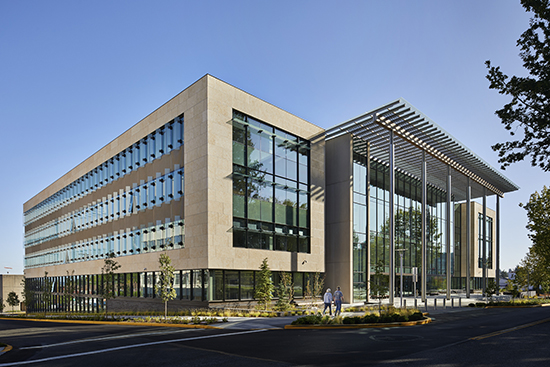|
Subscribe / Renew |
|
|
Contact Us |
|
| ► Subscribe to our Free Weekly Newsletter | |
| home | Welcome, sign in or click here to subscribe. | login |
Construction
| |
 |
September 27, 2019
Sustainable and resilient

Helen Sommers Building
Location: Olympia
Owner/developer: State of Washington
Team: Sellen Construction, general and concrete contractor; ZGF Architects, architect; KPFF Consulting Engineers, structural engineer; CalPortland, ready-mix supplier
Completed in 2017, the Helen Sommers Building is the first design-build project for the state Department of Enterprise Services. The five-story, 215,000-square-foot building covers an entire block and serves as the new home of the Washington State Patrol, the Office of Financial Management, the Office of the State Treasurer and other legislative and support agencies.
The state of Washington challenged the design-build team to deliver a new model of energy efficiency and sustainability. In addition to reducing greenhouse gases from building operations by 71%, the team focused on minimizing the embodied carbon in concrete as a complementary path to reduce overall greenhouse gas emissions.
By redesigning the concrete mixes for this project and producing environmental product declarations for almost all mixes, the team reduced the overall embodied carbon in the concrete by 27% compared with similar mixes in the Pacific Northwest. Compared to national averages, this project reduced the overall embodied greenhouse gas by 31%.
The maximum greenhouse gases reduction for a specific mix used in this project was 58% compared with the national average. By optimizing the 12,024 cubic yards of concrete placed in this project, 1,386 metric tons of greenhouse gases were saved — the equivalent of not driving 3.4 million car miles.
The requirement to limit overall building height to below the elevation of the capitol dome necessitated a thin floor structure and led the team to post-tensioned concrete decks as the preferred structural system.
The raw materials of concrete were available locally, which helped minimize transportation emissions; however, the greater challenge was to reduce the emissions associated with the cement content during concrete production.
Through a series of meetings with the concrete producer, the design team identified structural requirements, constructability needs and greenhouse gases reduction goals for the concrete mixes. To reduce the quantity of cement — the greatest source of embodied greenhouse gases in concrete — the materials engineer proposed mixes with supplementary cementitious materials such as ground granulated blast furnace slag. The maximum percentage of supplementary cementing materials used in this project's mixes was 50%.
As part of its design-build competition package, the team proposed creating new environmental production declarations for this project's concrete mixes as a way to measure the team's efforts to reduce embodied greenhouse gas impacts from the business-as-usual condition.
This project was the first publicly funded project in Washington that required environmental production declaration data for concrete mixes — 99.7% of this project's concrete has environmental production declaration data, providing a clear and quantifiable picture of the project's embodied greenhouse reduction amounts. As a result of this project, the concrete producer made environmental production declarations not only for the Helen Sommers Building, but also for 90 of its commonly used mixes in its Seattle, DuPont and Tumwater plants.
This has been catalytic for Washington's concrete industry. Prior to this project there were five environmental production declarations available for mixes in Washington state; today the number of environmental production declarations for concrete produced in Washington exceeds 2,000.
Other Stories:
- GRAND AWARD
Infrastructure (transportation) - Low-rise structures
- Low-rise structures (tilt up)
- Mid-rise structures (nonresidential)
- High-rise structures
- Infrastructure (non-transportation)
- Concrete paving
- Architectural and artistic


